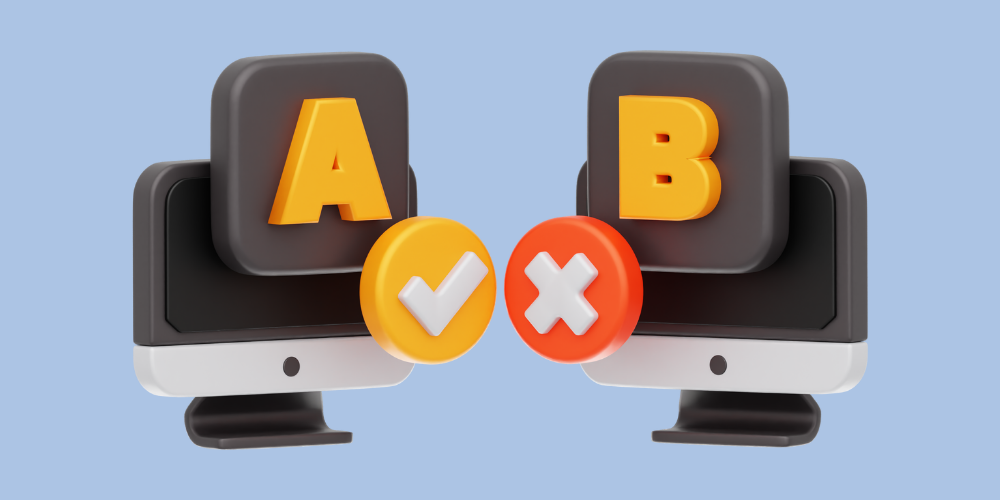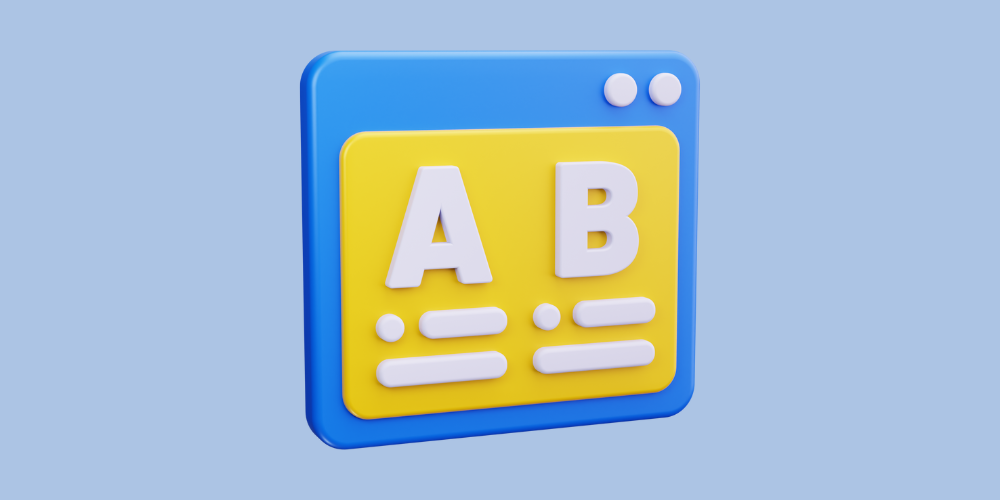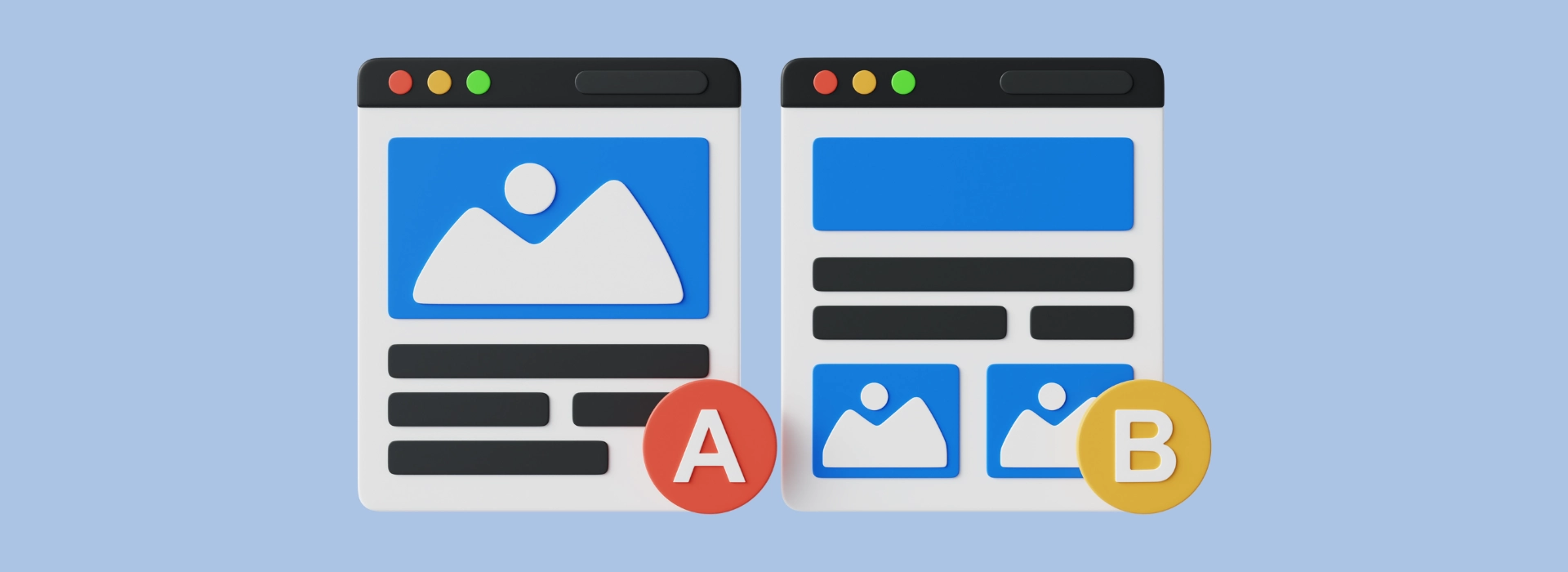Last Updated on 1 year ago by Ecem Ertürk
As digital marketing continues to evolve, businesses are increasingly focused on optimizing their conversion rates to drive growth. Whether you’re working with a growth hacking agency or managing your own marketing efforts, utilizing the best A/B testing tools is essential for refining strategies and maximizing ROI. In this blog, we’ll explore the most effective A/B testing tools available in 2024, how they can enhance your marketing efforts, and best practices for achieving optimal results.
What is A/B Testing?

A/B testing is a method used to compare two versions of a webpage or marketing asset to determine which one performs better. By splitting traffic between these versions, businesses can analyze user behavior and preferences, leading to data-driven decisions. Utilizing A/B testing tools allows marketers to optimize various elements, such as headlines or call-to-action buttons, to improve conversion rates. This testing method is essential for refining strategies and achieving better marketing outcomes.
Understanding the Basics of A/B Testing
A/B testing is a method of comparing two versions of a webpage or marketing asset to determine which one performs better. By randomly splitting traffic between the two versions (A and B), businesses can gather data on user behavior and preferences. This data-driven approach helps to optimize various elements, from headlines to calls to action, ultimately leading to improved conversion rates. A/B testing is crucial for any business aiming to make informed decisions that enhance user experience and increase engagement.
The Importance of A/B Testing in Conversion Rate Optimization
A/B testing plays a vital role in conversion rate optimization by providing insights into what resonates best with your audience. By systematically testing different elements, businesses can fine-tune their strategies to achieve higher conversion rates. This approach not only improves the overall effectiveness of marketing campaigns but also contributes to a better user experience, which can significantly reduce bounce rate. With the right A/B testing tools, businesses can make data-driven decisions that lead to measurable improvements in performance.
Key Features to Look for in A/B Testing Tools

When choosing A/B testing tools, it’s important to focus on key features that will enhance your testing process. Look for tools that offer ease of use, making it simple to set up and analyze tests without technical expertise. Integration capabilities with other marketing platforms are also crucial for a seamless workflow. Additionally, advanced targeting and segmentation options can help you get more accurate and relevant results from your tests.
Ease of Use and User Interface
When selecting an A/B testing tool, ease of use is a critical factor. A user-friendly interface allows teams to set up and run tests quickly, without requiring extensive technical knowledge. Tools that offer intuitive navigation and clear reporting make it easier to analyze results and implement changes. For businesses looking to streamline their testing process, choosing a tool with a strong user interface is essential.
Integration with Other Marketing Tools
Integration capabilities are another important feature to consider when choosing an A/B testing tool. Seamless integration with other marketing platforms, such as Google Analytics, CRM systems, and email marketing tools, enhances the effectiveness of your tests. This interconnectedness allows for more comprehensive data analysis and ensures that insights gained from A/B testing can be easily applied across various marketing channels.
Advanced Targeting and Segmentation
Advanced targeting and segmentation features enable businesses to test specific audience segments, leading to more relevant and accurate results. By targeting different user groups based on demographics, behavior, or device type, businesses can optimize their strategies for each segment. This level of precision is crucial for maximizing the impact of A/B testing efforts and driving higher conversion rates.
Top A/B Testing Tools for 2025
As digital marketing continues to evolve, the demand for effective A/B testing tools has grown significantly. In 2024, several tools stand out for their advanced features and ease of use. These A/B testing tools offer businesses the ability to optimize their marketing efforts, from landing pages to email campaigns, with precision. Choosing the right tool can make a significant difference in improving conversion rates and overall campaign success.
Optimizely

Optimizely is a leading platform for A/B testing and experimentation, offering advanced features like multivariate testing, personalization, and AI-driven recommendations. As one of the top A/B testing tools, it is well-suited for larger enterprises that require a flexible and scalable solution. Optimizely’s ability to test across multiple channels, including web, mobile, and email, makes it a versatile tool for optimizing the entire customer journey.
VWO (Visual Website Optimizer)

VWO is an all-in-one platform that combines A/B testing with conversion optimization features such as heatmaps, visitor recordings, and surveys. This tool is ideal for businesses looking to gain a deeper understanding of user behavior and make data-driven decisions. VWO’s user-friendly interface and comprehensive feature set make it a strong contender for businesses of all sizes looking to enhance their online performance.
Unbounce

Unbounce specializes in landing page optimization, making it a valuable tool for marketers focused on improving conversion rates. Its A/B testing capabilities allow users to experiment with different landing page designs and content to determine what drives the best results. Unbounce also integrates with a variety of other marketing tools, making it easy to implement successful A/B tests across your digital marketing strategy.
Crazy Egg

Crazy Egg offers a combination of A/B testing and user behavior analytics through features like heatmaps, scroll maps, and session recordings. This tool helps businesses understand how users interact with their website, enabling them to make informed changes that enhance user experience and increase conversions. By providing visual insights into user behavior, Crazy Egg helps marketers optimize their websites for better performance and higher clickthrough rates.
How to Choose the Right A/B Testing Tool for Your Business

Selecting the right A/B testing tools for your business involves assessing your specific needs and objectives. Consider factors such as ease of use, integration capabilities, and the level of support offered by the tool. It’s also important to compare pricing and features to ensure you get the best value for your investment. By carefully evaluating these aspects, you can choose A/B testing tools that will effectively optimize your marketing strategies and drive better results.
Assessing Your Business Needs
When selecting an A/B testing tool, it’s essential to assess your specific business needs. Consider factors such as your marketing goals, team size, budget, and the level of technical expertise available. Understanding your requirements will help you choose a tool that aligns with your business objectives and provides the features necessary to achieve success.
Comparing Features and Pricing
It’s important to compare the features and pricing of different A/B testing tools to find the best fit for your business. Look for tools that offer the capabilities you need, such as advanced targeting, integration options, and user-friendly interfaces. Additionally, consider the cost of the tool in relation to your budget and the value it provides. Balancing features with pricing will ensure you select a tool that delivers the best return on investment.
Evaluating Customer Support and Resources
Strong customer support and access to resources are crucial for the successful implementation of A/B testing. Evaluate the level of support provided by different tools, including access to customer service, documentation, tutorials, and community forums. A tool with excellent customer support and comprehensive resources will help your team get the most out of your A/B testing efforts and overcome any challenges that arise.
Best Practices for A/B Testing Success

To achieve success with your A/B testing tools, it’s crucial to follow best practices such as setting clear goals and running tests for adequate timeframes. Analyzing the results thoroughly and acting on the data-driven insights is essential for continuous improvement. Additionally, regularly updating and refining your tests will help you stay ahead of market trends. By leveraging A/B testing tools effectively, you can optimize your strategies and drive better conversion rates.
Setting Clear Goals and Hypotheses
Before starting any A/B test, it’s important to set clear goals and develop hypotheses that align with your business objectives. Defining what you want to achieve with your test—such as increasing conversions, improving user engagement, or optimizing a specific page—will guide your testing efforts and ensure you focus on the right metrics. A well-defined hypothesis will provide a solid foundation for your A/B testing strategy.
Running Tests for Adequate Timeframes
To obtain reliable results, it’s crucial to run A/B tests for an adequate timeframe. Using the right A/B testing tools ensures that your tests capture enough data to make accurate conclusions. Tests that are too short may not provide sufficient insights, while overly long tests can delay decision-making. Determining the optimal duration for your tests depends on factors like traffic volume, conversion rates, and the specific element being tested. Following best practices for test timing with your A/B testing tools will help you make data-driven decisions with confidence.
Analyzing and Acting on Results
Once your A/B test is complete, analyzing the results is key to making informed decisions that improve your marketing efforts. Look at the data to determine which version performed better and why, then implement the winning variant to optimize your website or campaign. Acting on A/B testing results is crucial for continuous improvement and driving long-term success in your digital marketing efforts.
In today’s competitive digital landscape, using the right A/B testing tools is essential for optimizing conversion rates and maximizing the impact of your marketing efforts. By selecting a tool that meets your business needs, following best practices, and continuously refining your approach, you can achieve significant improvements in performance and ROI. Whether you’re part of a growth hacking agency or managing your own business, implementing A/B testing as a regular practice will help you stay ahead of the curve and drive success in the long term.












